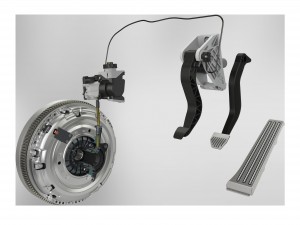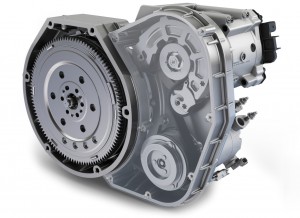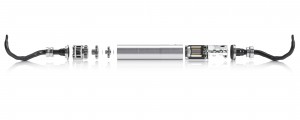Changing Technologies, Changing Perspectives
A Conversation with Jeff Hemphill, CTO at Schaeffler Group USA Inc.
Matthew Jaster, Senior Editor
We first heard from Jeff Hemphill, CTO at Schaeffler Group USA Inc., during the CTI Symposium USA that took place May 2016 in Novi, Michigan. Hemphill discussed how Schaeffler was creating an entirely new mobile ecosystem by improving transmission efficiency and noise, vibration and hardness (NVH) testing. Hemphill’s presentation was one of the highlights of the week. Months later, PTE Magazine had an opportunity to further discuss the automotive industry, mechatronics and Schaeffler’s unique role in creating these new mobile ecosystems.
Complete Mechatronic Solutions
During CTI, Hemphill talked about looking at potential technologies in new ways by “rearranging” the components in automotive systems. He believes Schaeffler is in a unique position in the mechanical power transmission market to accomplish this.
“We make everything from washers to complete mechatronic solutions. We come at it from a unique perspective in that we really understand all the details and exactly how everything comes together at the system level. This allows us to put things together in different ways,” Hemphill said.
One example is the company’s E-Clutch for manual transmissions in Europe. Hemphill said that one of the greatest challenges in automobile applications is to hybridize a manual transmission because the computer never knows exactly what the human driver is going to do. With the E-Clutch, the company created a product where a human is driving and operating the clutch, but the computer can also operate it.
Depending on the development stage, the new E-Clutch system either operates the clutch only under specific driving situations or completely automates all clutch operations. This enables fuel saving driving strategies, from “sailing” to electrically-supported driving, to be integrated into vehicles with manual transmissions.
In the automotive market, Hemphill says that everything for a supplier comes down to saving fuel or saving money.
“This is where things are really changing in terms of shared ownership. Vehicles are used more like in fleets than sitting in people’s garages. The hours of usage go up which really changes the TCO (total cost of ownership) for the fleet owner,” he said.
This opens the door for new solutions, like the adoption of battery-electric vehicles. “When you have a steady, relatively cheap electricity supply and you eliminate the maintenance issues that come with combustion engines and transmissions, it pays for itself faster than a commuter. In that picture, mechatronics are very important,” Hemphill added.
He also believes autonomy is going to play a large role in our shared mobility future. “For an autonomous vehicle to work, it’s going to need control of everything in the vehicle. That means you need many more actuators, everything that is moving will become mechatronic in some way,” Hemphill said.
The Importance of E-Mobility
In 2011, the company had a lot of activity in both the automotive and industrial sectors that focused on renewable energy or electric or hybrid vehicles.
“We wanted to bring that detailed knowledge together so we could add some resources, restructure some others and try to generate some new solutions,” Hemphill said. “We formed our E-Mobility Systems Division as a result.”
Schaeffler engineers took out the conventional powertrain from a vehicle and put in flexible hybrid and electrical architecture. They were able to study in one vehicle, electric wheel motors, electric axles, and also a range extender with a combustion engine in the same car.
“It was basically a rolling laboratory. It was a way to study the advantages and disadvantages of different types of technology. It’s the systematic approach that we’re taking with E-Mobility,” Hemphill said.
Many of the technologies first used in this rolling laboratory are now Schaeffler products. The wheel motors, for example, are now on their third generation.
“We’re convinced there is real potential for wheel motors when we start seeing more RoboCab (autonomous taxi services) that companies like Google and others are working on,” Hemphill said. “When a vehicle’s job is to operate at low-speeds in congested cities, it’s helpful to have a small vehicle and put the powertrain into the wheels. This will free up space for passengers or storage.”
Electric and Hybrid Challenges
Hemphill believes the potential and flexibility of hybrid and electric vehicles from an engineering standpoint is pretty easy to take advantage of. “The issue is largely battery cost,” Hemphill said. “Schaeffler has come up with a couple of things to combat these costs.”







